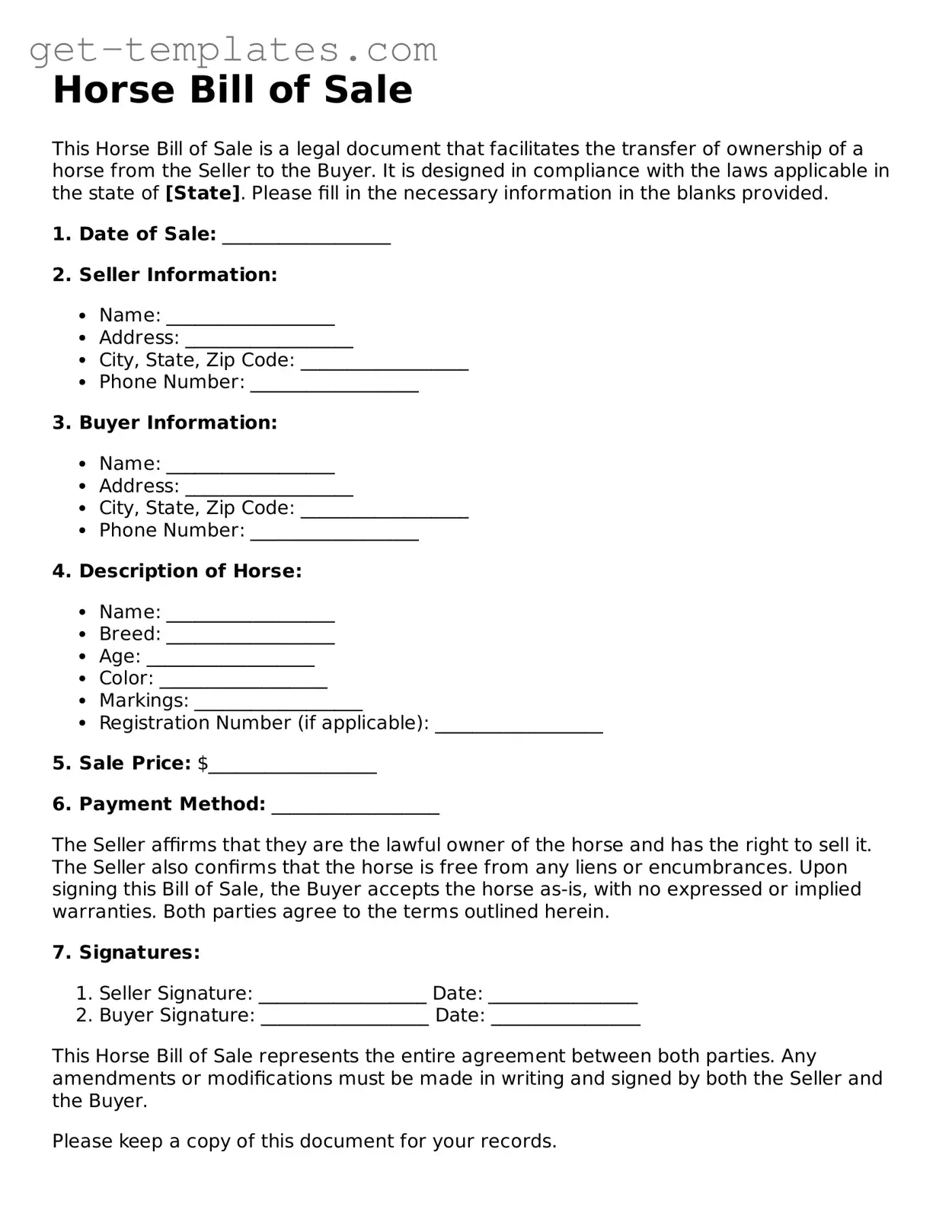What is a Horse Bill of Sale?
A Horse Bill of Sale is a legal document that records the sale of a horse from one party to another. It serves as proof of ownership transfer and outlines the terms of the sale. This document is essential for both buyers and sellers to ensure a clear understanding of the transaction.
Why is a Horse Bill of Sale important?
This document protects both the buyer and the seller. For the buyer, it provides evidence of ownership and may be necessary for registration or insurance purposes. For the seller, it helps confirm that the horse has been sold, limiting liability for any future issues related to the horse.
A comprehensive Horse Bill of Sale should include the following details:
-
Names and addresses of both the buyer and the seller
-
Description of the horse (breed, color, age, registration number)
-
Sale price
-
Date of sale
-
Any warranties or guarantees
-
Signatures of both parties
Do I need a witness or notarization for the Horse Bill of Sale?
While it is not always required, having a witness or notarization can add an extra layer of security to the transaction. A witness can confirm the identities of both parties, while notarization verifies that the signatures are legitimate. This can be particularly useful if disputes arise in the future.
Can I use a Horse Bill of Sale for other types of livestock?
Yes, a Horse Bill of Sale can often be adapted for other types of livestock. However, it is advisable to ensure that the document includes specific details relevant to the type of animal being sold. This may include breed, health records, and any other pertinent information.
What happens if there are issues after the sale?
If problems arise after the sale, the Horse Bill of Sale serves as a key piece of evidence. It outlines the agreed-upon terms and any warranties provided. Depending on the nature of the issue, the buyer may have grounds to seek remedies, such as a refund or compensation.
Is a Horse Bill of Sale legally binding?
Yes, a properly executed Horse Bill of Sale is legally binding. Both parties must agree to the terms, and their signatures indicate consent. However, it is important to ensure that the document is clear and complete to avoid potential disputes.
Where can I obtain a Horse Bill of Sale template?
Templates for a Horse Bill of Sale can be found online through various legal websites and resources. It is advisable to choose a template that is tailored to your state’s laws. Customizing the template to fit the specific details of the transaction is also recommended.
Can I modify the Horse Bill of Sale after it has been signed?
Once the Horse Bill of Sale has been signed, it is generally considered final. Any modifications should be agreed upon by both parties and documented in writing. Both parties should sign any amendments to ensure clarity and legal standing.
